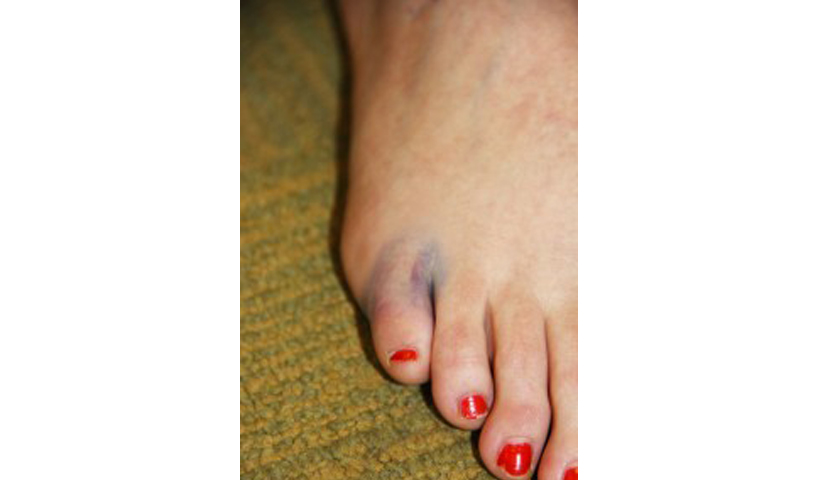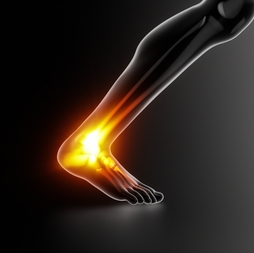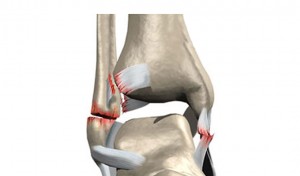Functional hinges use all their parts to be able to bend effectively. When a portion or fragment of the hinge is damaged, the whole structure is weaker and isn’t able to function as smoothly. This principle holds true for your body’s hinges—your joints. Breaks in even small parts of the bones making up a joint can be painful and result in weakness and instability. A lateral talar process fracture is one of these cracks that can destabilize and limit your ankle.
What Is It?
The lateral talar process is a bony protrusion on the outer side of the talus bone. The talus sits between the heel and your lower leg, where it allows both side-to-side rotation and up and down movement. Just under that outer ankle bump, the lateral talar process helps lock the bones in place so that your ankle can’t rotate too far to the outside when the foot is flexed. Enough force on the foot, however, can crack that protrusion.
This fracture is very painful, but it doesn’t necessarily impair your ability to walk. In fact, the symptoms are very similar to a regular ankle sprain. The discomfort appears immediately after the injury. You’ll most likely find it difficult—but not impossible—to bear weight on that foot. The ankle may or may not swell. The area around the talar process is tender to the touch. Flexing the foot or attempting to rotate the ankle outward generally worsens the symptoms. Like other broken bones, this injury needs targeted treatment to properly recover.
How Do You Treat It?
A lateral talar process fracture is actually misdiagnosed quite frequently. The break doesn’t always appear on X-rays shortly after the injury takes place. Since the symptoms also resemble a sprain, many times the problem is treated as such. Regular remedies for a sprain are not enough to allow a bone to recover, though. Many people still report painful symptoms weeks after the original injury and start of treatment. Identifying the fracture and offering it the correct remedy is key to restoring strength and comfort to the joint.
Our podiatrists can check your ankle and use in-depth diagnostic images like CT scans or MRIs to identify the fracture. Then they can help you apply the correct treatment for this break. You’ll need to immobilize the joint to prevent further aggravation of the bones and allow the crack to heal. A non-weight bearing cast will hold the joint still and keep pressure off it while it recovers. Once the bone has healed, you’ll need physical therapy to restore the full strength and range of motion to the joint. If the fracture is displaced or involves multiple pieces, you will most likely need surgery to repair the damage.
A lateral talar process fracture can be hard to identify, but the sooner the condition is caught and treated, the more likely it will heal without complications. Failing to treat the problem correctly risks arthritis and chronic ankle pain. If you’ve hurt your ankle joint, don’t wait too long to have it checked. Contact the experts here at Country Foot and Ankle in New York for an appointment or more information about ankle problems. Call (516) 741-FEET or fill out the online contact page to reach us.





